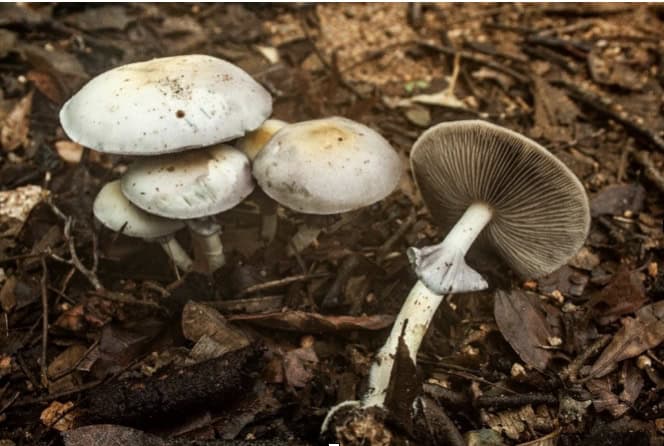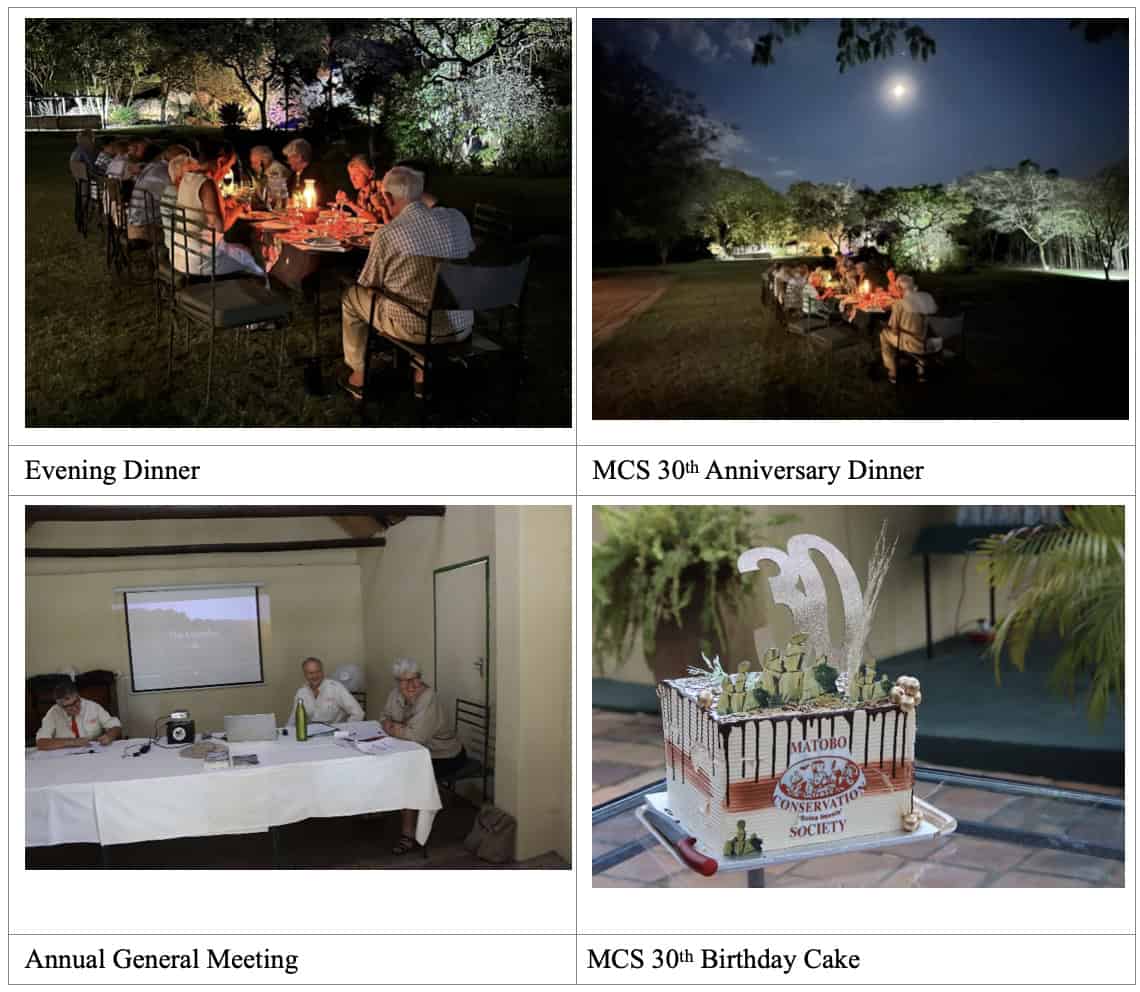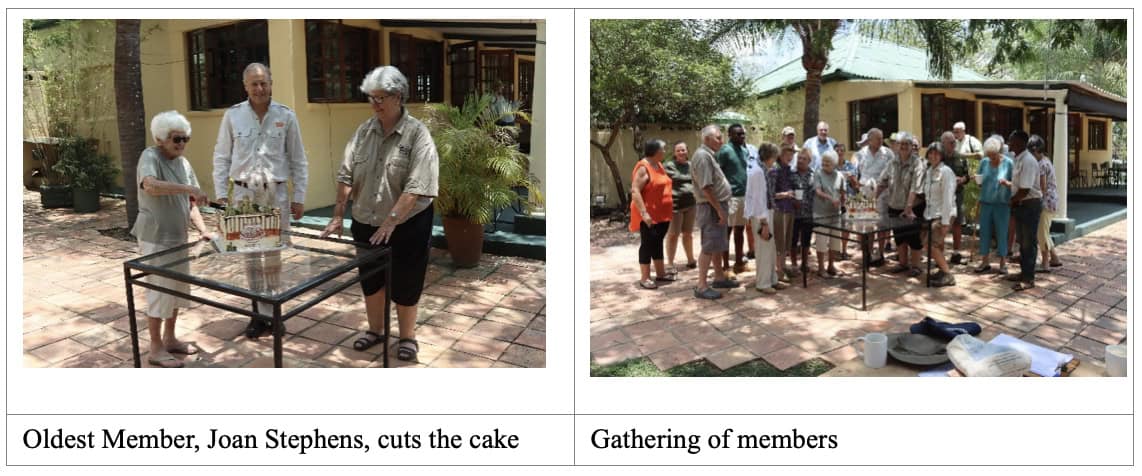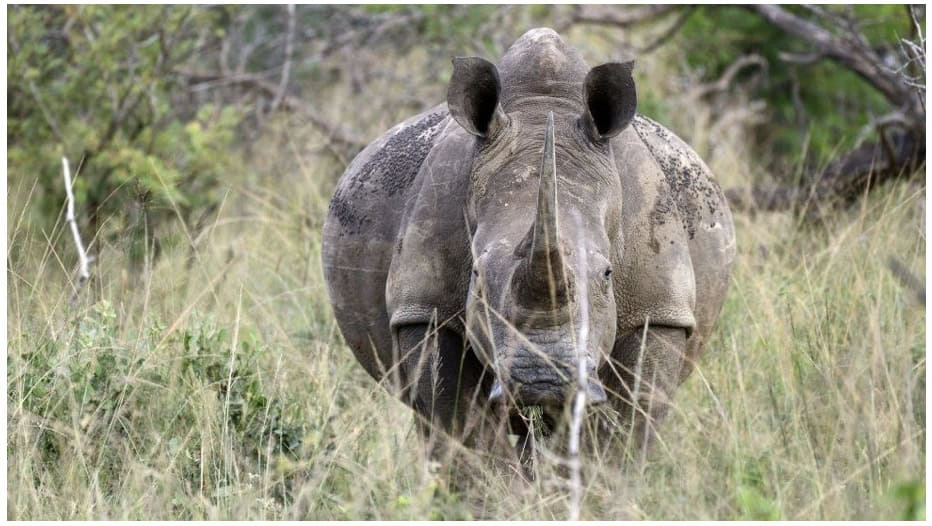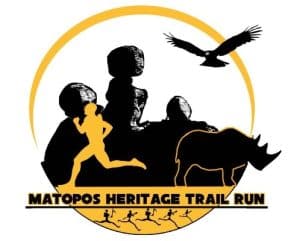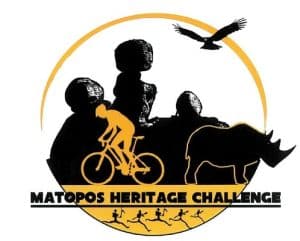1 – NEW COMMITTEE
The AGM returned your committee to office, and at the subsequent first committee meeting, the following portfolios were allocated:
Chairman Gavin Stephens
Vice-Chairman Neil Rix
Treasurer TBA
Secretary Gaynor Lightfoot
Membership Jean Whiley
Committee Members Verity Bowman and Moira Fitzpatrick
We were unable once again to appoint a Treasurer at the AGM, and still hoping that a member may yet come forward. Jean is kindly holding the portfolio.
Mr Rob Burrett did not stand for re-election, and we record our appreciation to him for his many years of service to the Society and interest in the Matobo Hills. Whilst he may not be on the Committee he remains a valuable resource to the Society.
We have subsequently co-opted Mr Dennis Chitewe onto the Committee to assist with Projects, and welcome him to our fold.
2 – NEW FUNGI IDENTIFIED
The Darwin Project operating in the Matopos under Cathy Sharp has decided to fund Cathy’s publication of her book on Zimbabwe’s Fungi which is very encouraging. A species of Magic Mushroom (Psilocybe), which had already been written up in the draft, has been confirmed as new to science. Two of the collections are from the Matobo Hills (Stonehills & Farmhouse) and one from Mukuvisi in Harare, all on granitic sand. This is very exciting for Zimbabwe – and more so for the Matopos. Congratulations to our researcher in residence – Cathy Sharp!
3 – NEXT EVENT
Date | Sunday 30th June 2024 |
Venue | Three Sisters |
Meet | 08:45am, Cresta Churchill Hotel for 09:00 departure |
Travel | Trucks are preferred but cars will certainly be suitable. We hope to share with our members the project work carried out at Three Sisters, as well as visit some places of historic interest in the area. |
Don’t forget your sunblock, hat, picnic lunch and drinks! Come prepared for a cool day.
4 – REPORT BACK – MATOBO CONSERVATION SOCIETY @ 30 YEARS
On Saturday 25th November we gathered at the Farmhouse to celebrate our 30th anniversary. Initially we enjoyed a wonderful sunset over the hills from a vantage point complimented by assorted libations, before we went on to enjoy an evening dinner under the moon light. Our Chairman spoke of the establishment of the Society and its progress over the past thirty years.
The next morning, we were joined by more members from Bulawayo, and the AGM was held. It included a screening of our Matopos promotional video, and a short Matopos Heritage MTB Challenge video which allowed members present to “share” in the experience.
John and Jenny Brebner were then asked to talk on the 60th anniversary of the Black Eagle study, and this was accompanied by wonderful pictures taken of the magnificent bird. The MCS regularly donates to this worthy cause.
Thereafter tea was held with the cutting of the 30th Birthday cake by our oldest member, Mrs Joan Stephens.
5 – BEST PARK IN AFRICA
Tanzania’s Serengeti National Park has been named the best in Africa for the fifth time in a row.
It beat six other parks in the continent in this year’s World Travel Awards (WTA), a global body that aims to reward excellence in travel and tourism.
The Serengeti, which is popular for its wildebeest migration, has won the award every year since 2019.
The Tanzania National Parks Authority (Tanapa) celebrated the Serengeti’s “stunning five-time victory”.
Other African contenders included Botswana’s Central Kalahari Game Reserve, Namibia’s Etosha National Park, Uganda’s Kidepo Valley National Park, South Africa’s Kruger National Park, and Kenya’s Masai Mara National Reserve.
6 – RAIN MAKERS ABANDON NJELELE SHRINE
With acknowledgement to The Southern Eye, 15 March, 2024
RAINMAKERS, commonly referred to Amahosana, have reportedly abandoned the sacred Njelele rainmaking shrine in Matobo, Matabeleland South province, to join apostolic sects.
Njelele has, since time immemorial, been used by people from various parts of the country and abroad for rainmaking ceremonies and healing of various ailments that affected their communities.
However, Southern Eye gathered that the traditional rainmaking ceremonies were no longer practised after Amahosana left. “Those who were originally meant to dance for the rain have abandoned the traditional practice,” a traditional leader who preferred anonymity said.
Historian and educationist Pathisa Nyathi said the developments were not surprising when most of the people have chosen to adopt foreign and modern cultures. “When the pillars of belief change, things begin to fall apart,” Nyathi said. “So, you can’t expect the Hosanna people to go and dance for the rain when the community no longer subscribes to that [belief]. It will not work hence they become irrelevant. So don’t think that Christianity was not doing its work.
It was and the whole idea was that Africans must abandon everything African, in particular their African indigenous spirituality and subsume that with religion known as Christianity that does not subscribe to African rainmaking ceremonies.”
Chief Nyangazonke said the developments were worrying. “We should sit down with Amahosanna, traditional healers, induna and many more others who dance for the rain,” he said. “Another thing is people have adopted modern cultures and they no longer care to follow our culture. People, especially the young now look down upon our culture and traditional beliefs.”
The custodian of Njelele shrine, Tobheka Ncube, said he was also of the belief that many have turned their backs on traditional rituals, values, and beliefs. “We urge the government to revisit the issue of sacred places and enact laws to protect these shrines and elevate them to national heritage status,” Ncube said.
In 2018, the sacred Njelele shrine was bombed by yet-to-be-identified suspects, who used mining explosives to blast the main rock that covers the shrine.
7 – LONGER DROUGHTS IN ZIMBABWE TAKE A TOLL ON WILDLIFE AND CAUSE MORE FREQUENT CLASHES WITH PEOPLE
With Acknowledgment to VOA, Thursday November 23
Harare – In a remote southeastern corner of Zimbabwe, people watched from cars or towers in an annual wildlife census, peering through binoculars at animals coming to drink at waterholes and jotting down notes, often by torchlight.
Around 140 volunteers slept in shifts through the 24-hour exercise, which is a valuable indicator of the status of the southern African nation’s wildlife resources during a worrying regional drought.
Before dawn, an elephant guided a calf to a stream. Lions roared in the distance. Noisy baboons stopped to drink. To everyone’s relief, the rains had come, and the grasslands were looking green again in Gonarezhou National Park, whose name means “place of elephants.”
But keen eyes can pick out signs of trouble. The split and shattered trunks of the massive baobab trees and the damage to the umbrella-like acacia trees, the savanna’s shade providers, are evidence of desperate elephants searching for food and water in the 5,000-square-kilometer park.
In other reserves in wildlife-rich Zimbabwe, animals have suffered even more as climate change-induced drought conditions take their toll.
The animals in Gonarezhou are “the fortunate ones,” said Tinashe Farawo, spokesperson for the Zimbabwe Parks and Wildlife Management Authority. In his office in the capital, Harare, he has received regular reports of anguish this year from national parks.
“It’s normal for animals to die, but now they are dying young,” he said. “They starve, they die. They get stuck in the mud, desperately looking for water and they die. It’s heartbreaking.”
Farawo said the parks agency was still compiling statistics, but 15 elephants died in a week in Hwange, the country’s largest park, this month, with 16 buffaloes also found dead.
The dry spells are becoming longer and more severe. For decades, Zimbabwe’s rainy season ran reliably from October to March. It has become erratic in recent years, sometimes starting only in December.
“Climate change is turning out to be our biggest challenge,” Farawo said. “Weather patterns have become unpredictable, so animals often have no food and water. Right now, we are in November and most of the country still has no rains.”
Across Africa’s national parks, similar effects of climate change are felt. Multiple studies show that extreme weather events are leading to the loss of plants and animals, which struggle to cope with longer dry spells and hotter temperatures.
Zimbabwe’s parks agency has intervened to ease the problem with 100 solar-powered boreholes to pump underground water into pools for animals to drink. But with so much surface water drying up, animals are still forced to walk longer distances, sometimes across national borders, in search of food and water.
The Kavango–Zambezi Transfrontier Conservation Area is the world’s largest multi-country conservation area, spanning 520,000 square kilometres over five southern African countries including Zimbabwe. The area is larger than Germany and Austria combined and provides a corridor for animals to freely trek for hundreds of kilometres.
“We often joke that unlike humans who stay close to the parks, animals can eat breakfast in Zimbabwe, lunch in Botswana and supper in another country,” he said.
The parched environment affects animals like elephants in multiple ways, according to a recent study by researchers from Zimbabwe, Britain and South Africa.
Their report, published in late October in the journal Nature Communications, cited a combination of heat, drought and population density as likely contributing factors for an outbreak of a blood-poisoning bacterial infection that killed 35 elephants during the dry season in Hwange National Park in western Zimbabwe in 2020. The report followed extensive tests on carcasses.
Zimbabwe is home to about 100,000 savanna elephants, second only to Botswana’s 130,000. Zimbabwe and Botswana over the decades have built large herds of elephants that far exceed the capacity of some parks, and both countries now say the effects of that overpopulation are worsened by resource depletion caused by climate change.
Birds are another victim. They need baobab, acacia and other trees for breeding, but hungry herbivores like elephants and giraffes leave little behind.
“They can only breed at a certain tree height, and it means it affects their breeding cycle because the trees are now too low for the security of their young ones,” Farawo said.
He warned that the future of some tree species is at risk, and “you can hardly see a young acacia or baobab tree because they are destroyed by the animals.”
And across Zimbabwe, there is increased conflict between humans and animals.
Many people living close to national parks, forests or mountains were already struggling to put food on the table due to depressed economic conditions. With the drought, they clash more frequently with animals that are encroaching into human settlements in search of food and water.
Farawo said the parks agency received about 4,000 distress calls from communities battling hyenas, lions, elephants, and baboons in 2022, and the human-animal conflict has been rising over the last five years. The agency received 900 calls in 2018, he said.
People sometimes dig trenches, establish bee hives or bang pots and pans to keep away animals. They are not always successful.
In Hwange town and surrounding areas, residents have raised the alarm with parks authorities over herds of elephants venturing from the park to eat from people’s gardens and fields, even destroying water pipes so that they can drink.
In the eastern Manicaland province, residents described what they called a new phenomenon: A hyena killed a man, ripping off his lips and a limb. “Now they are turning to humans,” the state-run Manica Post newspaper quoted a resident as saying.
Farawo confirmed the incident.
“It’s because the animals are looking for food,” he said. “Hyenas are an indicator species of food availability. If there is no food, they move all over, looking.”
8 – SA RHINOS: POACHING ON THE RISE IN NEW HOTSPOT
The majority of the rhinos poached in South Africa last year were in the Hluhluwe-Imfolozi National Park. By Kyle Zeeman. BBC News, Johannesburg
South Africa’s battle to defeat rhino poaching has taken a turn for the worse with the numbers killed rising in 2023.
Last year, 499 rhinos were hunted, an increase of 51 from the previous year, Environment Minister Barbara Creecy said.
South Africa is home to most of the world’s rhinos.
The country has some 2,000 black rhinos, considered to be “critically endangered”, and around 13,000 white rhinos, classed as “near threatened”.
Looking back over 10 years, poaching has fallen sharply from 2014 but has increased more recently.
Rhino horns have been in huge demand in Asian states such as China and Vietnam, where they are used in traditional medicines.
The majority of animals killed last year were in the Hluhluwe-iMfolozi Park in KwaZulu-Natal province.
The Kruger National Park, which had previously been a hotspot for poaching, saw a reduction of more than a third in 2023.
The success in dealing with poaching at Kruger, the biggest game park in South Arica, had led to criminal groups moving elsewhere, Ms Creecy told journalists.
“The increase is very concerning,” a spokesperson for the company that runs Hluhluwe-iMfolozi Park, Musa Mntambo, told the BBC.
Poaching groups “often struggle to spot rhino in the Kruger and so come here where they are more visible”, he added.
Last year, the government allocated $2.1m (£1.7m) to improving fencing in the Hluhluwe-iMfolozi Park.
Mr Mntambo said several other steps had been taken to fight poaching, including hiring more than a dozen more patrollers and acquiring a new surveillance helicopter.
“We have seen a decrease so far this year and we are hopeful that poaching will decrease in the coming months. By February last year we had 30 rhinos poached. This year we have 22.”
Ms Creecy said her department had undertaken an extensive de-horning programme, making the rhinos less attractive to poachers.
It has also gone on an anti-corruption drive to prevent park officials from colluding with gangs.
Jamie Joseph, head of environmental group Saving the Wild, has been a long-time critic of the government’s anti-poaching measures.
She predicted that poaching would continue to increase unless there was better intelligence gathering on the gangs.
“There is only one thing that will save that park and that is if they start running intel, set up ambushes and make arrests. Otherwise, nothing is going to change,” she told the BBC.
But Ms Creecy applauded the country’s specialist policing unit, the Directorate for Priority Crime Investigation, for its work in convicting 45 rhino poachers and traffickers last year.
9 – RAINFALL
The 2023/2024 was, as predicted, a dreadful year for rain. Not only was it poor, but what fell came in a few big downfalls with no consistency. It was also patchy, with a final wet spell in late April adding a few more mills to a disappointing year. None of the dams in the Matopos spilled this year.
Rainfall for the season – Western 187mm, Central 447mm, Eastern 442mm
10 – MANA POOLS LIFELINE
US$5 million boost for Mana Pools National Park: The Zimbabwe Parks and Wildlife Management Authority (ZimParks) has signed a US$5 million, 20-year deal with the Peace Parks Foundation (PPF) of South Africa for the conservation of Mana Pools National Park. The PPF, founded in 1997 by Anton Rupert, the late former South African President Nelson Mandela, and Prince Bernhard of the Netherlands, is an organisation that aims to re-establish, renew, and conserve large ecosystems in Africa, transcending man-made boundaries by creating regionally integrated and sustainably managed networks of Transfrontier Conservation Areas (TFCAs) – Daily News, Thursday November 30
11 – MATOBO LITTERING
From a member via social media
If something does not work, maybe try something else?
At Maleme picnic sites round the dam almost everyone has garbage lying around, papers, cans etc. Areal eye sore. As you drive past you find baboons hiding behind the bins or even inside, and then big male baboons eyeing you out as you pass by. Can I suggest just demolishing these concrete bins? Then put signs up that people must take out of the park all their rubbish. A dustbin looks ok and a legit place to put rubbish, but all you are doing is feeding baboons, and they scatter the rubbish. I doubt Parks comes and empties the bins on a regular basis anyway. Record the details of those who do drop rubbish and fine them. And if they leave the park without paying a fine, keep their details on record, those already recorded at the gate. A not so big problem is at Rhodes grave/World View, but why not have the same policy for the whole park. At Rhodes grave we see rubbish lying around near the staff quarters and off to the side. As Zimbabweans we need to learn to discard and destroy paper, tins, and other rubbish in a mature manner. Littering is low IQ, low morals, selfish and it shows little concern for others and future generations. If we start talking about littering in Bulawayo and elsewhere, then we realise Zimbabweans have a serious problem.
12 – 90% OF AFRICAN BIRDS OF PREY UNDER THREAT’ STUDY FINDS
Some 90% of Africa’s “spectacular” birds of prey are under threat, research by a Scottish university has found. According to researchers from the University of St Andrews and the Peregrine Fund, raptors lead an “increasingly perilous existence” in unprotected land in Africa.
A report from the team found habitat, food and breeding sites for the birds have been drastically reduced.
Major threats include persecution from ivory poachers and farmers, ritual killings, poisoning and collisions with wind turbines.
The report, published in the Nature Ecology & Evolution journal, warned of massive declines among nearly 42 species.
Monitoring began in West Africa in the 1970s, where the average rate of decline was more than twice that of other regions – but some species are now deemed to be “vanishing into oblivion” by ornithologists, the researchers said.
13 – ZIMPARKS TRANSFORMATION PAYS DIVIDEND
With acknowledgement to NewsDay
The transformation of the Zimbabwe Parks and Wildlife Management Authority (ZimParks) has resulted in sustainable conservation in the country, a new report has shown. An evaluation of ZimParks was requested and supported by the European Commission during the 2015-2016 period.
Consulting firm ARS Progetti Consortium was contracted to do the independent evaluation which was completed in 2016. A final report was submitted in February 2017.
Several challenges affecting the performance of ZimParks were identified in the process, among them, poor financial management.
According to the report, some of the key challenges that needed urgent attention include low staff morale, poor working conditions, lack of prioritisation of key operational activities, garnishing of authority accounts and a growing debt including a legacy debt of US$25 million.
In a statement, ZimParks director-general Fulton Mangwanya said the authority cleared all salary arrears between 2017 and 2020. “We also improved financial management systems and achieved a positive balance sheet, purchased uniforms for all employees and improved the image of the organisation, improved vehicle workshop service and reduced poaching of key species like elephant, rhino and large carnivores.
“Recruitment and training of rangers was done in 2018 and 2019, strengthening law enforcement efforts. After developing our five-year strategic plan for ZimParks (2019-2023), which was approved in 2018, we mobilised resources to sustain and intensify resource protection operations in all protected areas, formalising agreements, and implementation thereof” Mangwanya said.
“We also supported the development and submission of four key proposals at CITES COP18, something that had not been done before, even though the proposals could not sail through, it commanded a lot of respect for the country to voice concerns of our local communities living with wildlife and yet not being supported to trade internationally in wildlife products of listed species.”
Addressing rangers who had completed a rigorous three-month course in wildlife conservation in Matusadona National Park recently, Mangwanya said wildlife conservation contributes significantly to the National Development Strategy 1.
“Our collaborative efforts in the wildlife conservation industry, led by ZimParks, contributes, in a significant way, to the strategic plan for the ministry of environment, climate and wildlife, the government blueprint for vision 2030, the National Development Strategy 1 2021-2025, particularly contributing to the National Priority Area of Environmental protection, climate resilience and natural resources management and the national key results areas of environment and climate protection,” he said.
“The successful completion of this intensive training course by our wildlife rangers brings us closer to collectively achieving these goals.”
14 – SOCIETY CALENDAR OF EVENTS FOR YOUR DIARY
23-25th August 2024 Matopos Trail Run
21-24th November 2024 Matopos Classic MTB
15 – MEMBERS NOTEBOOK
Subscriptions
Subscriptions for the year 1 October 2023 to 30 September 2024 are now due. Please ensure that your subs are up to date. There has been no increase in rates.
US$ 20 Individual/Family
US$ 5 Pensioner/Student
US$100 Corporate
If you need any information, please contact matoboconservatiosociety@gmail.com
MCS Branded Apparel
The Society has a small stock of sleeveless fleece jackets, in olive green with orange MCS logo, available at US$20 each. They are ideal for the cool mornings and evenings. We also have stocks of hats and caps at $10 each. CD’s and shopping bags are also available at $5 each. Additional branded apparel (such as khaki shirts, fleece jackets, golf shirts) can be ordered on request. Please contact the Secretary via WhatsApp +263 71 240 2341 for further details
Website – www.matobo.org
We have recently upgraded our website which is now more modern and easier-to-use. It is intended to be more attractive and informative to both members and the general public. Member suggestions and contributions for the revised website are welcome.
Please email to matoboconservationsociety@gmail.com
Please visit our new Facebook page “Matobo Conservation Society” – LIKE or FOLLOW this to keep up to date.
The Natural History of the Matobo Hills
This MCS publication is available at the Natural History Museum for US$30. Arrangements can be made to send by registered mail anywhere in Zimbabwe for an additional US$5, or outside Zimbabwe for an additional US$10. Please email matoboconservationsociety@gmail.com
14 – OLD GWANDA ROAD
There have been two recent announcements regarding the upgrading of the Old Gwanda Road through the Matobo Hills. The World Heritage Committee has been in contact with the promotors seeking to ensure that the “Cultural Landscape” will not be damaged (unnecessarily) and that the World Heritage Values will be respected.
Cabinet approves US$110m Old Gwanda Road upgrade
Chronicle 22 May, Tshili, Nqobile.
CABINET has approved the US$110 million Public-Private-Partnership investment for the construction and upgrading of the 120KM Old Gwanda Road by Zwane Enterprise, which expects to complete the project within a year from commencement. Zwane Enterprise expressed interest in the construction of the gravel road last year and has a US$150 million budget for the project. In the past few months, the investor has been conducting feasibility studies and a total of 43 homesteads are expected to be relocated due to the project. The government recently revealed that it will be engaging the private sector in the construction of major roads in the country under the Build-Operate and Transfer model. In his post-Cabinet media briefing yesterday, Information, Publicity and Broadcasting Services Minister, Dr Jenfan Muswere, said Cabinet considered and approved Zwane Enterprises’ proposed investment to rehabilitate Old Gwanda Road at a cost of US$110 million. “Cabinet considered and approved the proposed Public-Private-Partnership between the Ministry of Transport and Infrastructural Development and Zwane Enterprises (Private) Limited for the upgrading, construction and tolling of the Old Gwanda Road, as presented by the Minister of Finance, Economic Development and Investment Promotion, Honourable Mthuli Ncube as the chairperson of the Public Private Partnership Committee,” said Dr Muswere. “Zwane Enterprises (Private) Limited, a Zimbabwe incorporated company, will upgrade, and construct the 120KM Old Gwanda Road from Bulawayo City, through Matobo to Gwanda. “Old Gwanda Road reduces the distance between Bulawayo and Gwanda by six kilometres compared to the existing Bulawayo to Gwanda via Esigodini, Mbalabala and Colleen Bawn.” Dr Muswere said the company will undertake the project through a Build-Operate-Transfer arrangement. “Construction of the road is expected to be completed in 12 months at a cost of US$110 million. Zwane Enterprises will fully finance the project and will recoup its investment through tolling points along the road,” he said. Two toll gates are expected to be placed along the Old Gwanda Road. In an interview last night, Zwane Enterprises chief executive officer, Engineer Bekithemba Mbambo said they were excited that the Cabinet has shown confidence in their capacity to develop the road. “The journey has been longer than the 120KM from Bulawayo to Gwanda that we will be developing. It has come to a point of no return,” he said. “We have been waiting for quite some time and we are happy that finally we will be starting the work. We are just waiting to sign a concession agreement before we go to the ground. “This is going to be a massive project that will have value chain benefits and create employment for locals,” said Eng Mbambo. He said communities should brace themselves for the construction of the project and soon they will start relocating affected communities. “We have plus or minus 43 homesteads that are going to be relocated to pave the way for the construction of the project. So, we are going to build them new homesteads before the project starts,” he said. Eng Mbambo hails from Sikithi area in Umzingwane District and has experience with using Old Gwanda Road, which is not trafficable due to its bad state. He previously stated that he was going to adopt the Government’s strategy of contracting several companies to construct the road as this has proven to be effective. Eng Mbambo also indicated that their intention to rehabilitate Old Gwanda Road was inspired by President Mnangagwa’s philosophy “Ilizwe lakhiwa ngabanikazi balo/Nyika inovakwa nevene vayo.”
Road contractor reveal innovative architectural designs: Zwane Enterprise, which was selected for the reconstruction of the 120km Old Gwanda Road, has revealed its innovative architectural designs, which aim to celebrate the cultural heritage and tourism ecosystem of Matabeleland South. The public-private partnership (PPP) represents a significant investment in Matabeleland South’s infrastructure. While the project was initially estimated to cost US$110 mln, Zwane Enterprise’s chief executive officer, Bekithemba Mbambo, states that the figure may now be closer to US$150 mln, with US$40 mln assigned to enhance the road’s elements and cultural storytelling. Our Bulawayo Bureau obtained exclusive access to these architectural designs, which show how the road aims to promote the diverse tourism offerings of Matabeleland South, with prominent tourism facilities and cultural sites integrated into the design. Mbambo said Zwane Enterprise isn’t just constructing a road, but creating a “window to tourism” that transforms the journey from Bulawayo to Gwanda into a cultural immersion experience. The innovative approach aligns with the government’s recognition of the essential role accessible roads play in tourism development, fostering smoother connections between travel enthusiasts and their dream destinations. The Ministry of Transport and Infrastructural Development, together with the Ministry of Tourism and Hospitality Industry, have already forged partnerships to revitalise the country’s roads and airports – Herald, Saturday June 1
16 – CONDOLENCES
We were saddened to learn of the passing of Coppie Dicey, a great supporter of conservation and of your society. We extend our condolences to John and family, at this sad time.
17 – IN MEMORIUM
Farewell to Meg Coates Palgrave
Meg has been part of my life since I was eighteen, just a few years ago! It’s been a privilege to share time with her in the field, particularly in the latter years when I was able to arrange collecting trips in the Mat. South Province. One trip is worthy of mention and Surrender Sibanda and Patson Mpofu will remember this very well. We spent a long, 12-hour day exploring the Esibomvu area of eastern Matobo looking for ‘hybrid-utilis’ Brachystegia, a beautiful drive down the escarpment from the Old Gwanda Road and up again. I KNOW that we botanists (and mycologists and entomologists) don’t move very far but I still expected to be back in Camp by sunset. At five o’clock, we were still in the ‘flat-land’ when we stopped for tea. Meg didn’t want tea – “Five o’clock is Beer Time!” and I didn’t have beers in the cooler-box! I was in the dog-box. Seriously in the ‘dog-box’! The three of us has our very welcome, quick tea while Meg growled at us until we finally reached Camp after 8pm! By that time, her first beer must have tasted so good. I never made that mistake again!
Although Meg had done many of her ‘Know Your Trees’ courses in the area, it was always rewarding for her to re-visit a place. We arranged courses at Farmhouse and at Hillside Dams and had a good attendance. Meg loved going into Matobo Hills and it was fun to share her enthusiasm when meeting up with a familiar friend (Euphorbia matabelensis) or Matobo ‘Specials’: Barleria randii – Matobo apricot barleria; Barleria matopensis – Matobo barleria; Gymnosporia matobensis – Matobo spikethorn; Strychnos matopensis – scrambling strychnos and Turraea fischeri ssp. eylesii – Matobo honeysuckle tree. The Tree nettle (Obetia tenax), cannot escape mention. Meg found a huge specimen at Big Cave Camp and this had to be seen to be believed! Her walking stick worked a treat in pulling a branch down for her to photograph. I cannot remember if she insisted that I collected a specimen for her or whether the photograph would do – a definite character to include in a horror movie! The plant I mean, not Meg!
The most important study that Meg was focused on was determining whether Brachystegia hybridised or not or were we looking at B. utilis? To gather more specimens for Meg, Judy Ross and I travelled 2500 kms around Zimbabwe and returned even more confused than before! MCS set aside some funding to have DNA analysis done on the leaf collections but finding a suitable laboratory to do this for us has been a challenge. The specialists ask: “What do you want to find out?” because that determines what methods are used for molecular analysis. Meg and I just want to know if we have B. utilis, a hybrid or a new species. Surely that’s simple enough? Apparently not! Sadly, we didn’t come to any conclusions before Meg died but I’m determined to continue this work in her honour. Thank you, Meg, for including me in your exciting explorations.

